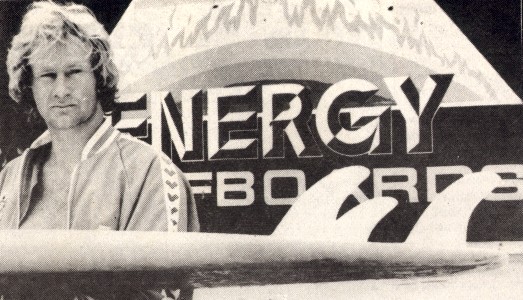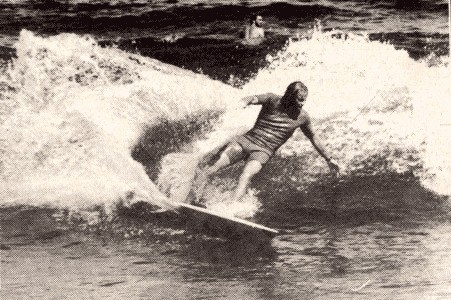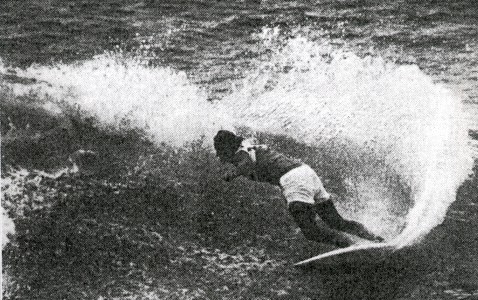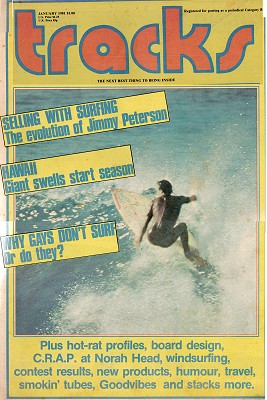 |
surfresearch.com.au
nick carroll
: three fins ? 1981
|
Nick
Carroll: Three Fins?? - Simon says Thrusttt!
Tracks
January 1981 Number 124, page 7.
Tracks
January 1981 Number 124, page 7.
Introduction
First known article featuring this ground-breaking design, the top photograph shows Simon Anderson and one of his first Thruster designs, probably made in late 1980, outside of the Energy Surfboards factory, 43 Carter Road, Brookvale.
Energy Surfboards was started in 1975, after Simon Anderson had spent 6 years at Shane Surfboards
During this time Shane Steedman employed a vast stable of surfers and shapers including Butch and Steven Cooney, Terry Fitzgerald, Bob Kennerson, both Peter Cornish's, David Baddy Treloar, and Richard Harvey.
Over the next twelve months, Simon rode his new design to victory in the Surfabout at Narrabeen, the Bells Beach Contest in Victoria and the Pipeline Masters in Hawaii.
The design was quickly adopted by several top Sydney surfers and shapers and introduced to Victoria by junior competitor, .
See Dougall Walker : The Tri - Fin
Tracks, May 1981 Number 128 page 16.
For an in-depth design retrospective by Simon Anderson, 1971 to 1981, see
Simon Anderson Reflects on a Decade of Shaping Surfboards (Interview)
Other articles of interest in this edition include:
Bob McTavish: New Materials and Windsurfing.
and
R.C. Pennie: Why Gays Don't Surf- or do they?
THREE FINS ??
SIMON SAYS ... THRUSSTTT! By Nick Carroll Of late many modern surfers have
revived the old late Sixties
catchphrase "two fins are better than one!" Could "three fins are better than two" become the cry of the Eighties? A new design by Simon Anderson suggests this may be the case. |
 |

 2.
2.